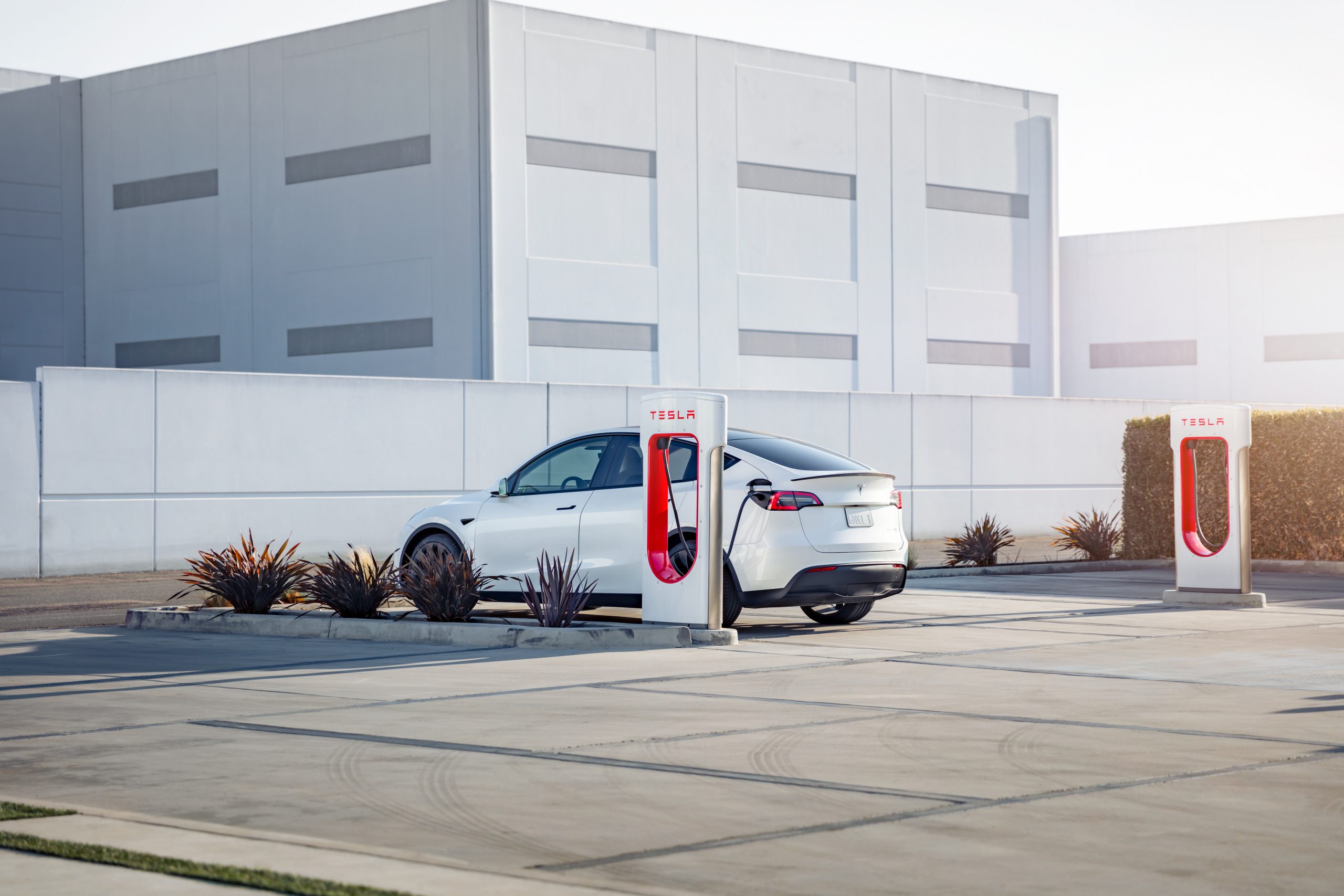
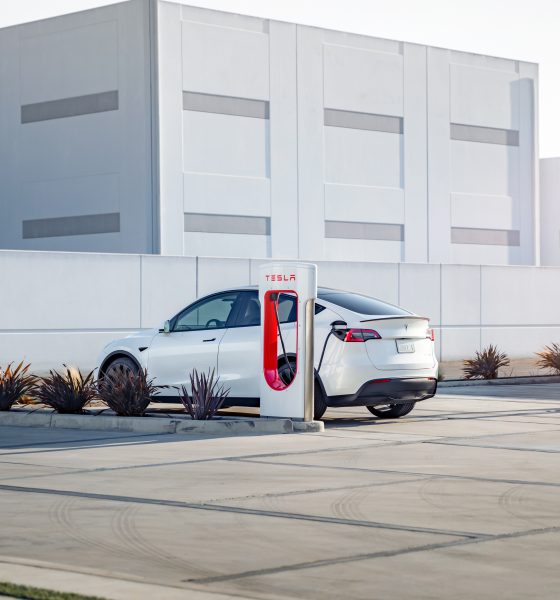
News
Opinion: Biden’s Tesla snub shows that clout, not innovation, is driving the American EV revolution
There was something missing during the Biden administration’s EV event at the White House on Thursday. While the event was promoted as a landmark meeting that signifies America’s commitment to embracing sustainable transportation, the world’s undisputed EV leader was noticeably absent. Eventually, one thing became quite clear — it is clout, not innovation, that is still driving the mainstream American EV revolution.
The Biden administration’s goals seemed good on paper, with the president announcing a national target of electric cars making up half of all new vehicle sales by 2030. Executives from the Detroit Big 3 were there, and for all intents and purposes, the event presented a venue for the administration and legacy automakers to somewhat pat themselves on the back for accepting sustainable transportation. This was despite the administration looking at hybrids, which are still equipped with a combustion engine, on the same playing field as zero-emissions vehicles like battery-electric cars.
Tesla’s absence in the White House EV event was noticeable. Elon Musk confirmed on Twitter that Tesla was not invited at all, and during the event, even netizens were quick to point out that an American automaker that practically forced the entire auto industry to shift to electric cars was strangely not invited to the White House. In a press briefing, White House press secretary Jenn Psaki was directly asked about Tesla’s absence, and her response was telling. “These are the three largest employers of the United Auto Workers (UAW), so I’ll let you draw your own conclusion,” she said.
The Elephant in the Room
Since its campaign days, the Biden administration has been clear that it supports electric vehicles. It was a good narrative, and it was the perfect foil to the Trump administration’s less-than-stellar commitment to zero-emissions transportation. Biden has always made it clear: he supports electric cars, especially those that are made by American labor. But over the past months, and amidst Biden’s appearances prior to the release of the Ford F-150 Lightning, one thing became clear: The administration is fond of EVs that are made in the United States — but only if they are produced through union work.
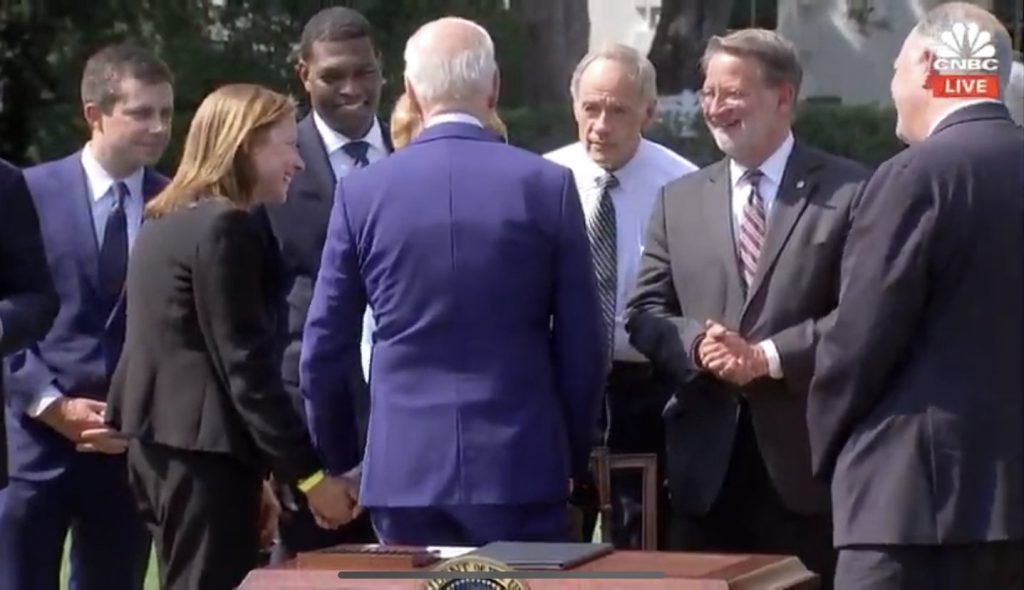
Electric cars that are made in America but not through union work like Teslas simply don’t get as much recognition — or any recognition at all. This was particularly evident in statements from Transportation Secretary Pete Buttigieg, who hobbled through his responses in a CNBC appearance in what appeared to be a conscious effort to avoid stating Tesla’s name. It was also very evident in the fact that the US President personally made it a point to mention union work numerous times during the White House EV event.
What is particularly interesting is that there is a reason why Tesla does not use union work in its Fremont Factory, unlike its Grohmann facility in Germany. It’s easy to run away with the narrative that Elon Musk is a tyrannical boss who intimidates employees to avoid them from joining the UAW, but the truth is more nuanced than that. It should be noted that the Fremont Factory, before it was bought by Tesla, was actually a plant powered by union work. And its closure, which effectively ended an ambitious project that was supposed to bring Japanese efficiency to American automaking, is something worth looking into.
A History Swept Under the Rug
The United Auto Workers’ mission is to fight for the rights of all workers, organize unions, and bargain and win fair wages and benefits of its members. But the Fremont Factory, even in its early days, was not exactly a picture-perfect example of how the UAW and an automaker could coexist together. Bruce Lee, a former running back from the University of Arkansas who was in charge of the GM Fremont Factory’s union before the facility became NUMMI, noted that tensions were typically high between unionized workers and management.
“It was considered the worst workforce in the automobile industry in the United States. And it was a reputation that was well-earned. Everything was a fight. They spent more time on grievances and on things like that than they did on producing cars. They had strikes all the time. It was just chaos constantly,” Lee said, adding that a 20% absenteeism was normal . This was echoed by noted author Jeffrey Liker, who interviewed workers at the GM Fremont plant’s early days. According to Liker, things were so bad at the plant that alcohol use, intercourse, and drug use were rampant among the employees. Defects in cars were typical too. Billy Hagerty, who used to put hoods and fenders on the plant, noted that quality of the cars from the GM Fremont plant was so bad that some Buick Regals had Buick Monte Carlo front ends, and vice versa.

The UAW was particularly powerful then, and this contributed to the GM Fremont factory’s workers practically running wild, with some workers intentionally putting coke bottles and loose bolts on door panels to spite the management and trigger customer complaints. GM eventually shut the plant down in 1982, laying off about 5,000 workers. The site was later transformed into New United Motor Manufacturing, Inc. (NUMMI) under a joint venture between Toyota and GM. But while the site hit the ground running thanks to Toyota’s highly efficient production techniques and its focus on teamwork, issues in the plant eventually arose. When General Motors filed for Chapter 11 bankruptcy in 2009, GM announced that it would pull out of the facility, which eventually resulted in NUMMI being shut down for good.
NUMMI’s shutdown was not received well by its unionized workers. During a meeting between NUMMI employees and UAW officials, things became so heated that an outraged older worker and union official ended up in a cussing match. A physical altercation almost happened. It was then no surprise that years later, and as CEO Elon Musk would note, the UAW would eventually fail to gain a foothold at the Tesla Fremont Factory. Tesla may not have hired the same workers from NUMMI, but some of those who work in the company today likely remember the history of the plant — and how it was let down by the UAW.
An Unrestrained Narrative — The UAW’s Favorable Streak
The Biden administration seems all too content to sweep this history under the rug. If his comments during the White House EV event were anything to go by, America’s electric vehicle shift is only lauded and recognized by the powers that be if unions are involved. This is almost ironic, considering that as recently as 2019, about 48,000 unionized GM workers held a strike because the company was looking to adopt electric vehicles. UAW Research Director Jennifer Kelly explained the workers’ reservations in a statement to CNBC then. “EV powertrains are simple compared to internal combustion engines. The simplicity could reduce the amount of labor, and thus jobs, associated with vehicle production,” Kelly said.
At this point, it seems high time to recognize that Tesla is an American success story that will not be celebrated, at least while the Biden administration is focused only on union-made electric vehicles. This means that Tesla would remain uninvited for landmark events such as this past Thursday’s EV meet at the White House, and it would likely remain a company that officials would refuse to acknowledge or name for its contributions to the country’s transition to electric cars.
This means that a narrative — even one that may not necessarily be accurate — could start settling in. A look at a statement from Ford Executive Chair Bill Ford following the White House event shows that such a thing is now happening. “I am proud that Ford is leading the electric revolution… Ford has always been a leader in sustainability,” he noted. Such a statement would likely be accepted as truth by many, or at least by those who are unfamiliar with the uphill climb that Tesla has gone through in its efforts to force the industry to embrace EVs.
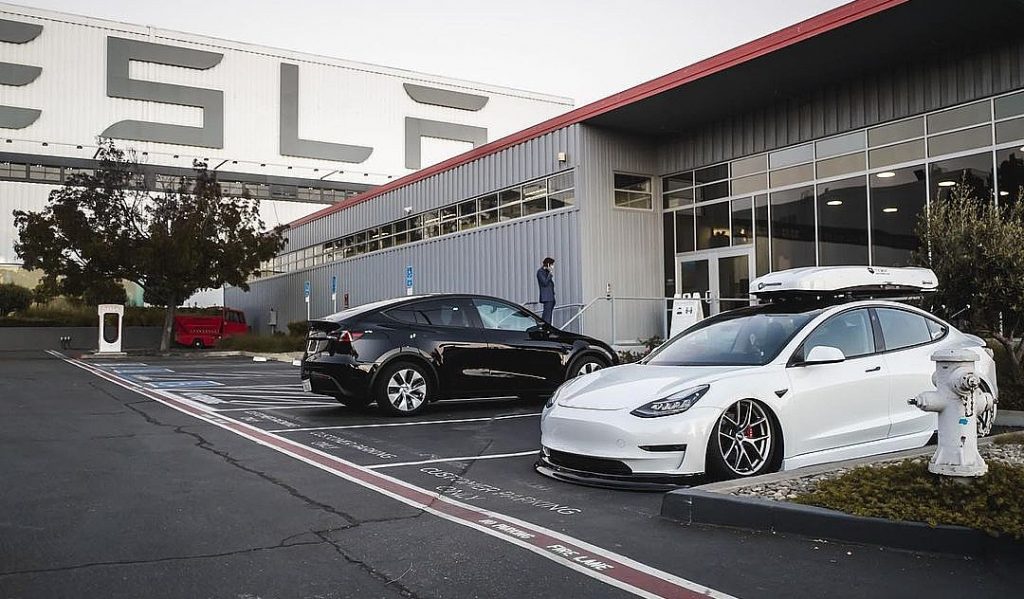
And amidst this, the UAW would likely be painted quite favorably. A company like Tesla, not so much. What is rather interesting is that a similar event has happened in the past. Back when the NUMMI was under threat of being shut down, the UAW opted to point the blame at Toyota. This was despite GM being the first company that pulled out of the facility. An article from the The New York Times was panned by actual NUMMI workers after it stated that Toyota’s decision to close up shop was the “foulest form of ingratitude.” Ironically, even unionized workers from NUMMI had issues with how Toyota was painted then, with some stating that GM and the UAW must take just as much blame for the facility’s failure.
A Tesla-shaped Punching Bag and an Underdog Story
What is rather interesting about the Biden administration’s focus on union-made EVs is the fact that organizations such as UAW have actually been steadily losing power. The UAW’s power may have been evident in the Fremont Factory’s pre-NUMMI days, but today, both its influence and its membership are quite far from their heights. UAW membership declined by nearly 10% in 2018 alone, with the organization losing over 35,000 members, and that was a year when 264,000 new manufacturing jobs were added to the US.
If there is something that the Biden administration has done with its recent Tesla snub, it is to highlight the company’s image as an underdog. And this, in a lot of ways, could backfire. The world loves underdogs, after all, and Tesla has always been one, from its days as a small electric sports car maker with grand plans to change the auto industry, until today, when it serves as a punching bag of sorts for critics of both the climate crisis and EVs as a whole. Matt Johnson Ph.D., an author and a professor at Hult International Business School in San Francisco, noted that people will always be drawn to underdogs because they tend to drive feelings of empathy and hope.
This is something that is very true of Tesla. Tesla may dwarf legacy auto today by market cap, but things like the Biden administration’s White House snub helps the company maintain its underdog status. This is arguably one of the reasons why Tesla and its CEO, Elon Musk, have such a strong following. The “cult” of Elon Musk and Twitter controversies and debates aside, it is difficult not to give a nod of respect to a company that pulled legacy automakers kicking and screaming towards an electric age. And the more Tesla is ignored or snubbed, the more influence the company may actually have.
“When we are led to believe that a company succeeded against external disadvantages (like an economic recession, for instance), we identify with the situation. The more we identify and internalize the gravity of the story, the more we root for it. There’s evidence indicating that brands with an underdog story can increase the intention to purchase and influence brand loyalty,” Johnson noted.
Don’t hesitate to contact us with news tips. Just send a message to tips@teslarati.com to give us a heads up.

News
Tesla dispels reports of ‘sales suspension’ in California
“This was a “consumer protection” order about the use of the term “Autopilot” in a case where not one single customer came forward to say there’s a problem.
Sales in California will continue uninterrupted.”

Tesla has dispelled reports that it is facing a thirty-day sales suspension in California after the state’s Department of Motor Vehicles (DMV) issued a penalty to the company after a judge ruled it “misled consumers about its driver-assistance technology.”
On Tuesday, Bloomberg reported that the California DMV was planning to adopt the penalty but decided to put it on ice for ninety days, giving Tesla an opportunity to “come into compliance.”
Tesla enters interesting situation with Full Self-Driving in California
Tesla responded to the report on Tuesday evening, after it came out, stating that this was a “consumer protection” order that was brought up over its use of the term “Autopilot.”
The company said “not one single customer came forward to say there’s a problem,” yet a judge and the DMV determined it was, so they want to apply the penalty if Tesla doesn’t oblige.
However, Tesla said that its sales operations in California “will continue uninterrupted.”
It confirmed this in an X post on Tuesday night:
This was a “consumer protection” order about the use of the term “Autopilot” in a case where not one single customer came forward to say there’s a problem.
Sales in California will continue uninterrupted.
— Tesla North America (@tesla_na) December 17, 2025
The report and the decision by the DMV and Judge involved sparked outrage from the Tesla community, who stated that it should do its best to get out of California.
One X post said California “didn’t deserve” what Tesla had done for it in terms of employment, engineering, and innovation.
Tesla has used Autopilot and Full Self-Driving for years, but it did add the term “(Supervised)” to the end of the FSD suite earlier this year, potentially aiming to protect itself from instances like this one.
This is the first primary dispute over the terminology of Full Self-Driving, but it has undergone some scrutiny at the federal level, as some government officials have claimed the suite has “deceptive” naming. Previous Transportation Secretary Pete Buttigieg was vocally critical of the use of the name “Full Self-Driving,” as well as “Autopilot.”
News
New EV tax credit rule could impact many EV buyers
We confirmed with a Tesla Sales Advisor that any current orders that have the $7,500 tax credit applied to them must be completed by December 31, meaning delivery must take place by that date. However, it is unclear at this point whether someone could still claim the credit when filing their tax returns for 2025 as long as the order reflects an order date before September 30.
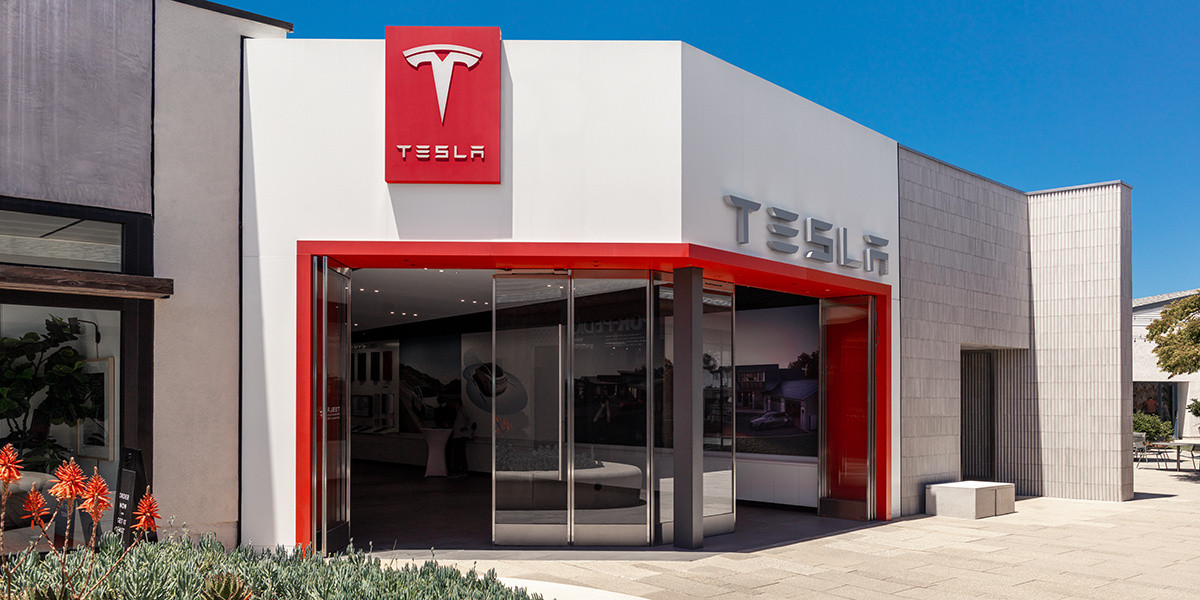
Tesla owners could be impacted by a new EV tax credit rule, which seems to be a new hoop to jump through for those who benefited from the “extension,” which allowed orderers to take delivery after the loss of the $7,500 discount.
After the Trump Administration initiated the phase-out of the $7,500 EV tax credit, many were happy to see the rules had been changed slightly, as deliveries could occur after the September 30 cutoff as long as orders were placed before the end of that month.
However, there appears to be a new threshold that EV buyers will have to go through, and it will impact their ability to get the credit, at least at the Point of Sale, for now.
Delivery must be completed by the end of the year, and buyers must take possession of the car by December 31, 2025, or they will lose the tax credit. The U.S. government will be closing the tax credit portal, which allows people to claim the credit at the Point of Sale.
🚨UPDATE: $7,500 Tax Credit Portal “Closes By End of Year”.
This is bad news for pending Tesla buyers (MYP) looking to lock in the $7,500 Tax Credit.
“it looks like the portal closes by end of the year so there be no way for us to guarantee the funds however, we will try our… pic.twitter.com/LnWiaXL30k
— DennisCW | wen my L (@DennisCW_) December 15, 2025
We confirmed with a Tesla Sales Advisor that any current orders that have the $7,500 tax credit applied to them must be completed by December 31, meaning delivery must take place by that date.
However, it is unclear at this point whether someone could still claim the credit when filing their tax returns for 2025 as long as the order reflects an order date before September 30.
If not, the order can still go through, but the buyer will not be able to claim the tax credit, meaning they will pay full price for the vehicle.
This puts some buyers in a strange limbo, especially if they placed an order for the Model Y Performance. Some deliveries have already taken place, and some are scheduled before the end of the month, but many others are not expecting deliveries until January.
Elon Musk
Elon Musk takes latest barb at Bill Gates over Tesla short position
Bill Gates placed a massive short bet against Tesla of ~1% of our total shares, which might have cost him over $10B by now
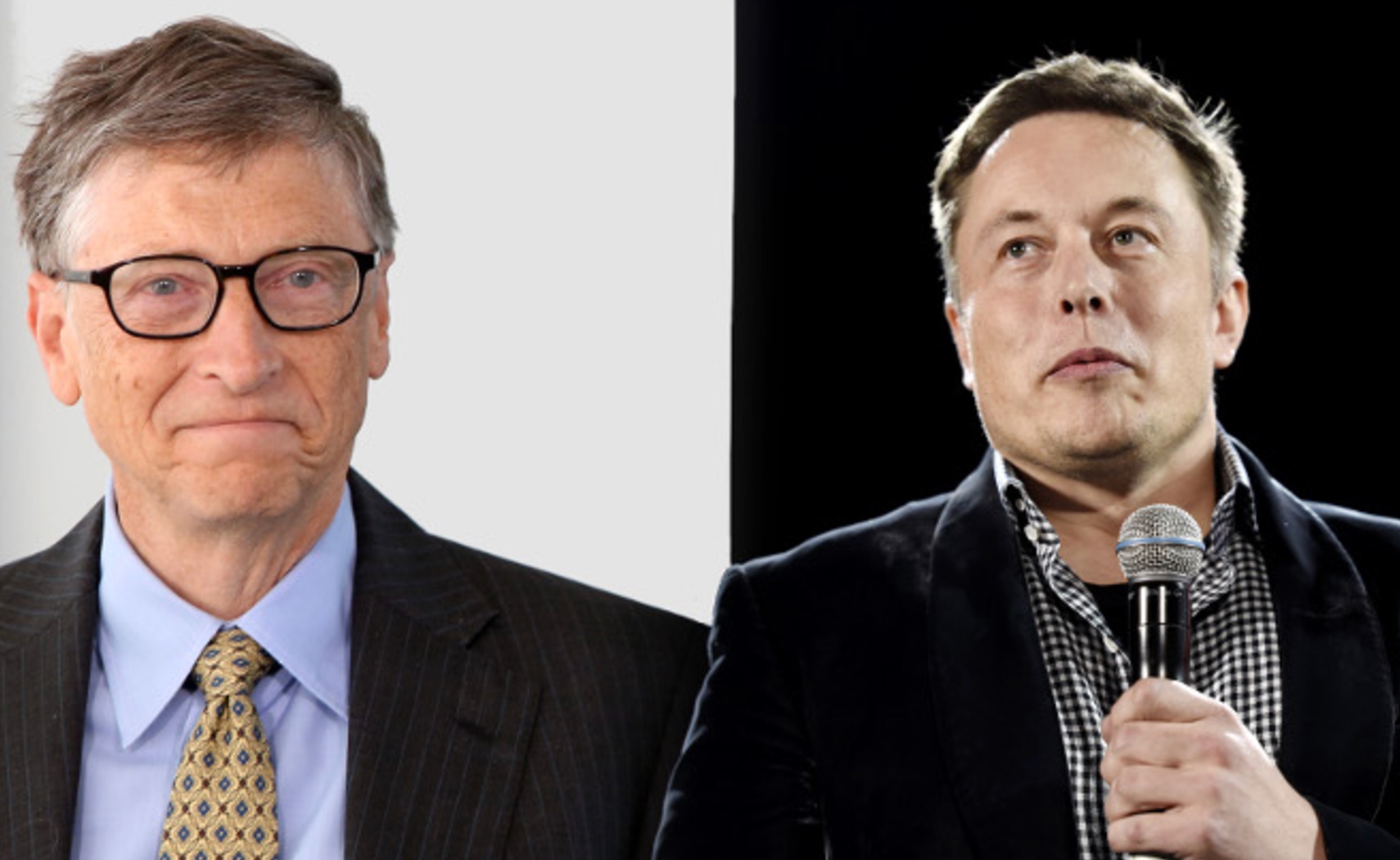
Elon Musk took his latest barb at former Microsoft CEO Bill Gates over his short position against the company, which the two have had some tensions over for a number of years.
Gates admitted to Musk several years ago through a text message that he still held a short position against his sustainable car and energy company. Ironically, Gates had contacted Musk to explore philanthropic opportunities.
Elon Musk explains Bill Gates beef: He ‘placed a massive bet on Tesla dying’
Musk said he could not take the request seriously, especially as Gates was hoping to make money on the downfall of the one company taking EVs seriously.
The Tesla frontman has continued to take shots at Gates over the years from time to time, but the latest comment came as Musk’s net worth swelled to over $600 billion. He became the first person ever to reach that threshold earlier this week, when Tesla shares increased due to Robotaxi testing without any occupants.
Musk refreshed everyone’s memory with the recent post, stating that if Gates still has his short position against Tesla, he would have lost over $10 billion by now:
Bill Gates placed a massive short bet against Tesla of ~1% of our total shares, which might have cost him over $10B by now
— Elon Musk (@elonmusk) December 17, 2025
Just a month ago, in mid-November, Musk issued his final warning to Gates over the short position, speculating whether the former Microsoft frontman had still held the bet against Tesla.
“If Gates hasn’t fully closed out the crazy short position he has held against Tesla for ~8 years, he had better do so soon,” Musk said. This came in response to The Gates Foundation dumping 65 percent of its Microsoft position.
Tesla CEO Elon Musk sends final warning to Bill Gates over short position
Musk’s involvement in the U.S. government also drew criticism from Gates, as he said that the reductions proposed by DOGE against U.S.A.I.D. were “stunning” and could cause “millions of additional deaths of kids.”
“Gates is a huge liar,” Musk responded.
It is not known whether Gates still holds his Tesla short position.








